#Henri Matisse's childhood
Explore tagged Tumblr posts
Photo



Yves Tanguy (1900 - 1955) was in many respects the quintessential Surrealist. A sociable eccentric who ate spiders as a party trick, and a close friend of Andre Breton, Tanguy was best-known for his misshapen rocks and molten surfaces that lent definition to the Surrealist aesthetic. Self-taught but enormously skilled, Tanguy painted a hyper-real world with exacting precision. His landscapes, a high-octane blend of fact and fiction, captured the attention of important artists and thinkers from Salvador Dalí to Mark Rothko who admitted their debt to the older artist. And even Carl Gustav Jung used a canvas by Tanguy to illustrate his theory of the collective unconscious.
Yves Tanguy was born into a maritime family. His father was a sea captain and the family lived at the Ministere de la Marine in the Place de La Concorde. The seas, skies and stones of the the Finistère coasts in Brittany, where Tanguy spent his summers as a child, appear in his mature work. His early life dealt him some hard blows - his father died in 1908 and his brother died in the First World War. His mother moved to Locronan, Finistère, but Tanguy stayed in Paris to complete his education. As a teenager, Tanguy was lucky enough to make friends with Pierre Matisse (son of Henri Matisse) whose encouragement and support would be crucial to his artistic career, which did not begin immediately. His family expected him to join the Merchant Navy and so he did, working on cargo boats between South America and Africa from 1918-1919. In 1920 he was conscripted into the French Army in Tunis, where he met the poet Jacques Prévert who delighted in Tanguy's eccentricity and strange habits - from chewing his socks to eating live spiders. The latter became a party trick that he would often repeat.
KEY IDEAS
Tanguy's symbolism is personal, reflecting his obsession with childhood memory, dreams, hallucinations and psychotic episodes. It defies explicit interpretation, and evokes a range of associations that engage the viewer's imagination and emotions.
Tanguy's landscapes strike a balance between realism and fantasy. Naturalistically-depicted objects hover in midair, or drift toward the sky. Masterful manipulations of scale and perspective, and keen observations of the natural world contribute to the hallucinatory effect of his scenes. His bizarre rock formations were most likely inspired by the terrain of Brittany, where his mother lived.
Like other Surrealists, Tanguy was preoccupied with dreams and the unconscious. What set him apart was the naturalistic precision with which he depicted the mind and its contents. This was his key contribution. More vividly than any artist before him, Tanguy imagined and depicted the unconscious as a place. (the artstory).
30 notes
·
View notes
Note
Hi moon :) what are your top 5 favorite artworks?
OHHH this is a wonderful and challenging question!!! love it

this painting by hilma af klint (1907), which is from a series that depicts life from childhood to old age. this one specifically represents adulthood

music room by salman toor (2021). it's one of the first painting i've seen from this artist and im still enamored by it

red studio by henri matisse (1911). I just love all this red and brings me joy when i look at it, maybe bc i want to have this studio

bedroom in arles by vincent van gogh (1888). i guess i have a thing for artists painting their living spaces <3

seated figure with broken bowl and lemons by hugo grenville (?)
#these are the first ones that came to mind#i completely forgot every artist and every painting i've ever loved#anyway#this i think sums it up pretty well#ask game
6 notes
·
View notes
Text
I was tagged by @howdydowdy ages ago (quite literally gosh), thank you a lot! Even if it was incredibly hard to pick up only 8 books oh my god, the show version felt like a walk in the park in comparison lol
8 shows books to get to know me in no specific order
- "Les Fleurs du Mal" by Charles Baudelaire, illustrated by Henri Matisse. I got this book when I was maybe 10? I liked Baudelaire already (I was a very festive child I swear), and I loved drawing and art, so my mother - who loves book as much as I do - got it for me. It cemented my love of poetry, I think. Baudelaire is still a favorite of mine, and Matisse's illustrations just enhanced the experience.
"Alors, ô ma beauté! dites à la vermine Qui vous mangera de baisers, Que j'ai gardé la forme et l'essence divine De mes amours décomposés!" - from "Une Charogne"
- "The Belgariad" (and "The Mallorean" that follows) by David & Leigh Eddings. I have always loved fantasy stories, and this one has been with me for a long time. It's very classic fantasy, Chose One goes on a quest with the help of A Group of Prophecy Designated Companions but it's terribly well done, the characters are lovely, and it's very funny.
Silk: Not to worry, Urgit. Hettar came all the way through the streets of your capital, and he didn't kill even one of your subjects. Urgit: Remarkable. You've changed, Lord Hettar. You're reputed to be a thousand feet tall and to wear a necklace of Murgo skulls. Hettar: I'm on vacation. - from one of The Mallorean books
- "My Lesbian Experience with Loneliness" by Nagata Kabi. There had to be some illustrated work of course. Sometimes you read a story that resonates so much with you it kind of makes your body vibrates - like an echo that keeps responding to itself. This story did that to me, and the art (sketchy, nervous, simple but efficient) truly enhances the feelings.
“Maybe the times I couldn't move were the times I needed to take better care of myself.”
- "Le Petit Prince" by Antoine de Saint-Exupéry. Another one from when I was a child. I had an abridged version read by French actor Gérard Philippe, and I would listen to that CD all the time. Then my mom (her again) got me the book, and I have read and reread it regularly since then. I think I like different things about it now than when I was a child, of course, but the sadness of the Narrator at the end makes my heart aches the same way it did back when I read the book sitting under my desk at 12.
"Et quand tu sera consolé (on se console toujours) tu seras content de m'avoir connu. Tu seras toujours mon ami. Tu auras envie de rire avec moi. [...] Ca sera comme si je t'avavais donné, au lieu d'étoiles, des tas de petits grelots qui savent rire..."
- "Smoke and Mirrors" by Neil Gaiman. Particularly "Chivalry" and "Murder Mysteries", respectively first and last of the collection. I love a great many of Gaiman's works, so he had to go on the list. I picked this one because it sparked my love and appreciation of the short story format. Plus, I love magic hidden in the mundane (like in Chivalry), and I love retelling of religious stories (like in Murder Mysteries), so it's also a good intro to that I think.
"I feel dirty. I feel tarnished. I feel befouled. Perhaps it is true that all that happens is in accordance with Your will, and thus it is good. But sometimes You leave blood on Your instruments." - from "Murder Mysteries"
- "Oh boy!" by Marie-Aude Murail. She was my favorite author when I was a child/teen, I devoured everything she offered (the Nils Hazard series was such a huge part of my childhood). I picked this one because I loved it very, very much - I remember breaking a friendship because I lent it to a girl who never gave it back to me, lying that her mom bought it for her and that it was not mine. It's a story about grief, about siblings love, about facing adversity together and coming out from the other side, maybe a little worse for wear but still here. All things I still cherish very much in stories today that I'm the adults' age and not the teens anymore.
"Chapitre 13 qui n'existe pas pour ne pas porter la poisse aux Morlevent."
- "This is how you lose the time war" by Amal El-Mohtar and Max Gladstone. Sometimes you start a book the way you absent-mindedly brush your fingers against the surface of water, and sometimes that water swallows you whole but you don't drown, the water just fills you. I closed that book with all its words left in me, I think, and I had to catch my breath again. It's about war, and it's about love, time, and choices and sacrifices. It's a small book, all in all, but it took me some time to come back down from it. I think mostly, it's here because it touched me, and it's a good example of why I like words. Also it's epistolary, a format I deeply, deeply love.
"But when I think of you, I want to be alone together. I want to strive against and for. I want to live in contact. I want to be a context for you, and you for me."
- "The Discworld" by Terry Pratchett. I know this one is, like, the worst cheat because it's more than 40 books and I just went and gave them all to you as one. But I can't have them off the list! Not a year goes by without me re-reading some of them, and while I do have favorites they all hold a big place in my heart. The whole collection (in French and in the Atalante edition which is, like, very pretty) was my mom's gift for obtaining my PhD even if I already owned nearly all of them in either French or English, so I guess that gives you an idea of how much I love them.
"Why do you go away? So that you can come back. So that you can see the place you came from with new eyes and extra colors. And the people there see you differently, too. Coming back to where you started is not the same as never leaving." - from "A hat full of sky"
I won't tag ppl because I tagged a lot for the actual show version, and I don't know how much my mutuals would like to do it, but if you do PLEASE tag me so I can see your lists <3
#... can you guess my mom always encouraged my love of books lol#really picking eight was so SO hard because I read so many books and I love so many of them lol#I guess it makes for a good start as any for what kind of books I enjoy!#I tried to not put too many books in French but also#at least Baudelaire and Le Petit Prince I'm sure can easily be found in English so it's fine ^^ hopefully#books#tag games
2 notes
·
View notes
Text

Advice to Work on Yourself ⛸ in December 2022: Aquarius
8 Cups - The Hermit - 5 Wands & 2 Pentacles
Regarding: 7 Pentacles
This feels work related, you could be taking a bit of a break from the usual work routine in December, though your artist card still nod towards constant productivity, and 2 Pentacles is the same energy. There’s a decision you’re needing to make, probably regarding travel, we’ve got three traveling cards here. You’ve put a lot of work into whatever you do, and have in the past, you’ve done the best thing for yourself. Now there’s some dream you’re wanting to chase, some next level or better thing on the horizon. This could require travel or relocation though, and this is where you’re most conflicted. Or, how to move forward generally. Also could be holidays, and not being around for them, if that’s the case. Your ambition is on fire, but to get what you want, you have to release something else. A job, a team of people, a routine, your literal location. And you want this, you’ve worked hard for it.
It’s the moving away part that really gets you, in whatever sense that is. You’re not happy about it, and haven’t yet made your decision because of it. Aquarius isn’t a fan of change, like the rest of the fixed signs, they get comfortable in one place and dig deep roots. You’re conflicted about responsibilities, maybe you have too many as it is, and will this new thing even help? Or make it worse? You could be used to a team of people where now you’re on your own, with this Hermit. Not a fan of that either. The advice though, is that your deliberating and procrastinating is you getting in your own way, holding back your opportunities. You’ve worked for this and Spirit is saying, it’s time to hit the gas and get this show on the road.
Animal Oracle: Spider 🕷
“Trust the creative spark you’re feeling, and express it through writing stories that inspire and enlighten.”
The pulse of creativity is especially strong right now, triggering a not unfamiliar and compelling desire to express yourself through creative writing. Whether or not the tales you weave are true, whether they’re based on actual experience or the imaginings of your fertile mind, each day sit yourself down and pour out the words that come to you. Don’t ponder each sentence or paragraph; just write whatever wants to be written through you.
To inspire and enlighten others, you don’t need a profoundly complex take. Start by describing a personal experience, one where you gained some insight that may also be useful for others. However, don’t focus on how people will respond to your story; instead, just enjoy the process of writing without judging your work or yourself. Write to express - not to impress. In attempting to write, you may find yourself easily distracted, either with others’ needs for your time and attention, or with those negative thoughts and beliefs that are the product of judgements and shame that you were subjected to during childhood. A powerful way to release these habitual and self-limiting thoughts and feelings is to write about them in story form. As you do so, don’t hold back anything. Through such a catharsis, you heal those words that had originally wounded you.
Artist Oracle: HENRI MATISSE
- Unleash the beast within.
- Productivity, even in pajamas.
- Sketch boldly and paint with a big stick.
Advice:
- Make Smiles Contagious
- Learn About Emotional Intelligence
- Vote Someone Off the Island 🏝
Charms:
Star of Fame 🌟 on Henri is an amazing opportunity to be noticed, which is what your advice here is too, along with “unleash the beast”. Show them what you’ve got, and hold nothing back. This kind of attention is very positive, meaning good things are coming, possible promotions or being noticed by the right people in the right way - however that fits for you.
2 notes
·
View notes
Text
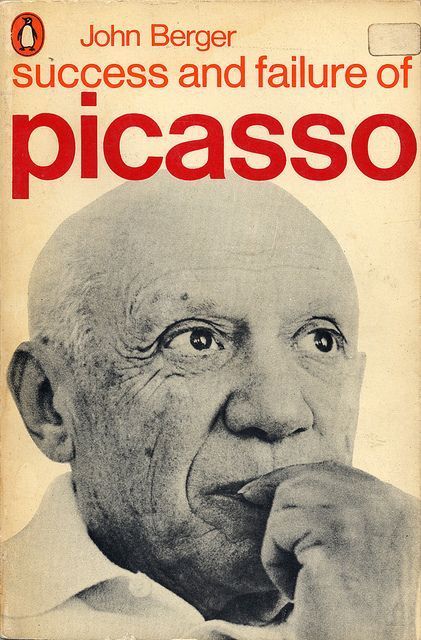
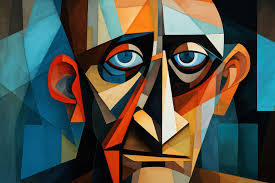
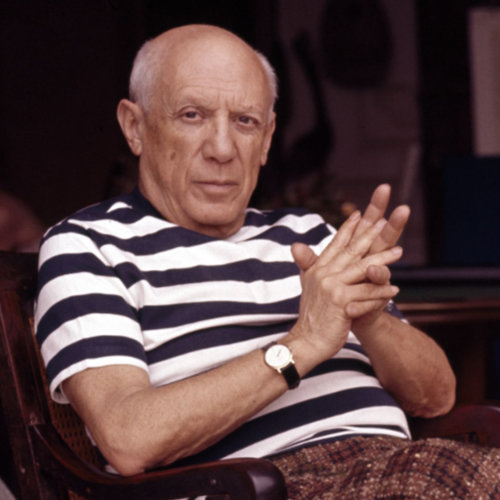
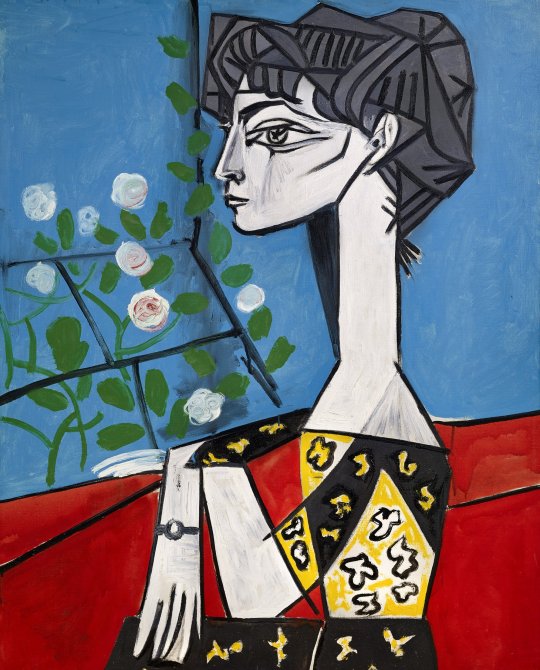
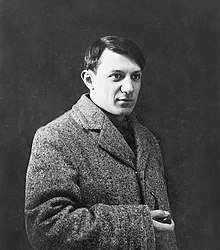

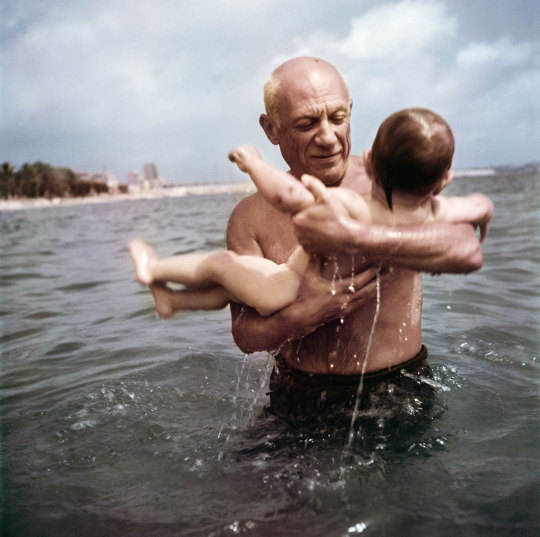
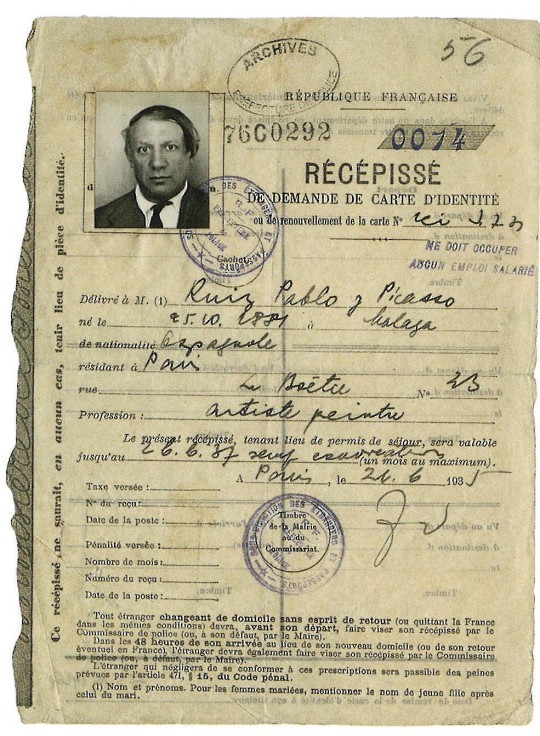
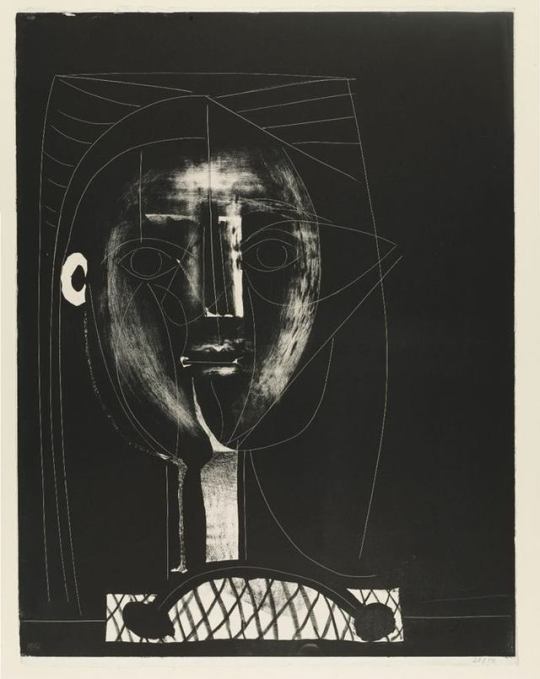

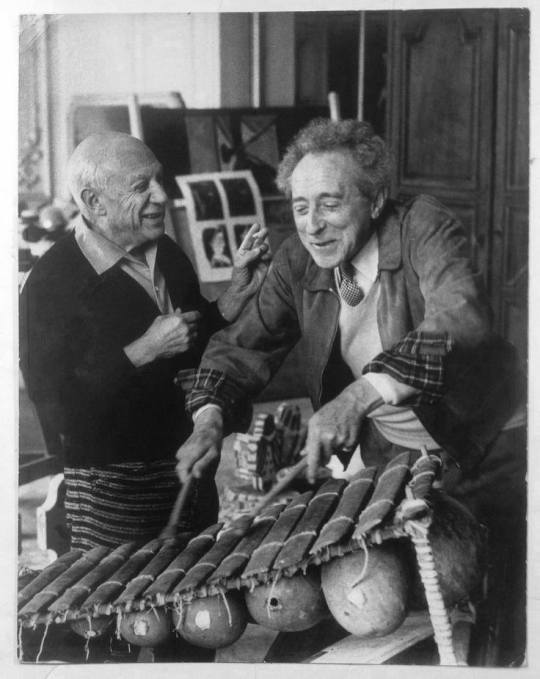
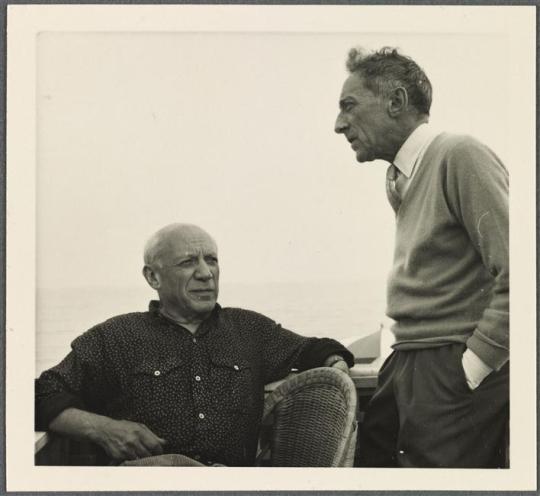
Arrivals & Departures . 25 October 1881 – 8 April 1973 . Pablo Ruiz Picasso
Pablo Ruiz Picasso was a Spanish painter, sculptor, printmaker, ceramicist, and theatre designer who spent most of his adult life in France. One of the most influential artists of the 20th century, he is known for co-founding the Cubist movement, the invention of constructed sculpture, the co-invention of collage, and for the wide variety of styles that he helped develop and explore. Among his most famous works are the proto-Cubist Les Demoiselles d'Avignon (1907) and the anti-war painting Guernica (1937), a dramatic portrayal of the bombing of Guernica by German and Italian air forces during the Spanish Civil War.
Picasso demonstrated extraordinary artistic talent in his early years, painting in a naturalistic manner through his childhood and adolescence. During the first decade of the 20th century, his style changed as he experimented with different theories, techniques, and ideas. After 1906, the Fauvist work of the older artist Henri Matisse motivated Picasso to explore more radical styles, beginning a fruitful rivalry between the two artists, who subsequently were often paired by critics as the leaders of modern art.
Picasso's output, especially in his early career, is often periodized. While the names of many of his later periods are debated, the most commonly accepted periods in his work are the Blue Period (1901–1904), the Rose Period (1904–1906), the African-influenced Period (1907–1909), Analytic Cubism (1909–1912), and Synthetic Cubism (1912–1919), also referred to as the Crystal period. Much of Picasso's work of the late 1910s and early 1920s is in a neoclassical style, and his work in the mid-1920s often has characteristics of Surrealism. His later work often combines elements of his earlier styles.
Exceptionally prolific throughout the course of his long life, Picasso achieved universal renown and immense fortune for his revolutionary artistic accomplishments, and became one of the best-known figures in 20th-century art.
1 note
·
View note
Text
References
Barrett, E., and Bolt, B. (Eds.). (2014). Practice as research: Approaches to creative arts enquiry. Bloomsbury Publishing.
Carrington, Suzanne B. (2007) Young people as researchers using image-based research: a focus on methodology. In Proceedings AERA National Meeting, Chicago, USA.
Carrington, Suzanne B. (2007) Young people as researchers using image-based research: a focus on methodology. In Proceedings AERA National Meeting, Chicago, USA.
Kourkoulis, L. (2021). The Network of Influences That Shape the Drawing and Thinking of Fifth Grade Children in Three Different Cultures: New York, US, Molaos, Greece, and Wadie Adwumakase, Ghana. Teachers College, Columbia University. https://academiccommons.columbia.edu/doi/10.7916/d8-753v-t132/download
Ravenscroft, I. ed., 2009. Chapter 6: The Folk Theory of Colours and the Causes of Colour Experience. Minds, ethics, and conditionals: themes from the philosophy of Frank Jackson. Oxford University Press.
Rezaee, F., Hoseinikhah, A., Kian, M., & Kamran, A. (2022). A Comparative Study of Art Curriculum in Early Childhood Education of Australia, Canada, Finland, New Zealand and Iran. Iranian Journal of Comparative Education, 5(4), 2098-2125. https://journal.cesir.ir/article_160839.html
Sanders, A. M. C. (2009). Identity hokey pokey:" put your whole self in" with theatre as your guide (Doctoral dissertation, California State University, Sacramento). https://scholars.csus.edu/esploro/fulltext/graduate/IDENTITY-HOKEY-POKEY-PUT-YOUR-WHOLE/99257972358301671?repId=12255750810001671&mId=13255750780001671&institution=01CALS_USL
Issuu. (2023). “Creativity Takes Courage” - Henri Matisse. Available at: https://issuu.com/thebsbblog/docs/art_catalogue_23/s/25044502 (Accessed 26 August 2023).
Kourkoulis, L. (2021). The Network of Influences That Shape the Drawing and Thinking of Fifth Grade Children in Three Different Cultures: New York, US, Molaos, Greece, and Wadie Adwumakase, Ghana. Teachers College, Columbia University. https://academiccommons.columbia.edu/doi/10.7916/d8-753v-t132/download
Lomax, Y. (1981). Writing the image: an adventure with art and theory.
McNally, A. (2013). All that stuff! Organising records of creative processes. Judy Vaknin [et al.](Hg.): All this Stuff–Archiving the Artist, Faringdon (Oxfordshire), 97-108.
Miles, M. (Ed.). (2004). New practices-new pedagogies: a reader. Routledge.
Ravenscroft, I. ed., 2009. Chapter 6: The Folk Theory of Colours and the Causes of Colour Experience. Minds, ethics, and conditionals: themes from the philosophy of Frank Jackson. Oxford University Press.
Rezaee, F., Hoseinikhah, A., Kian, M., & Kamran, A. (2022). A Comparative Study of Art Curriculum in Early Childhood Education of Australia, Canada, Finland, New Zealand and Iran. Iranian Journal of Comparative Education, 5(4), 2098-2125. https://journal.cesir.ir/article_160839.html
Sanders, A. M. C. (2009). Identity hokey pokey:" put your whole self in" with theatre as your guide (Doctoral dissertation, California State University, Sacramento). https://scholars.csus.edu/esploro/fulltext/graduate/IDENTITY-HOKEY-POKEY-PUT-YOUR-WHOLE/99257972358301671?repId=12255750810001671&mId=13255750780001671&institution=01CALS_USL
Stokes, D. (2014). The role of imagination in creativity. The philosophy of creativity: New essays, 157-184. https://philpapers.org/archive/STOTRO-17
Suk, H. J. (2006). Color and Emotion-a study on the affective judgment across media and in relation to visual stimuli. None.
Team, C. (2023). Van Gogh: The Solitude of a Starry Night. ChatStick Team. https://www.google.co.in/books/edition/Van_Gogh_The_Solitude_of_a_Starry_Night/s0zPEAAAQBAJ?hl=en&gbpv=0
Uljaevna, U. F. (2022). Development of creative activity of preschool children in art game as a psychological and pedagogical problem. Barqarorlik va yetakchi tadqiqotlar onlayn ilmiy jurnali, 47-51. http://www.sciencebox.uz/index.php/jars/article/download/3018/2752
Volans, A., & Brown, E. (2021). Children expressing themselves. Oxford Textbook of Palliative Care for Children, 95.
0 notes
Text
The Article ‘Toys coursework research’ by Tate.org, is really interesting as it discuses some of the same things I have been thinking about or wanting to challenge, such as
“After all toys are pretty basic, and art is meant to be deep and meaningful isn’t it?”
It also discusses how artists in the beginning of the 20th century strived to achieve a child-like approach and wanted to unlearn their “art” skills. Artists like Pablo Picasso, Paul Klee, Paul Cezanne, and Henri Matisse are among some of the artists that the article mentions. It also mentions how Alexander Calder -known for his mobiles- visited Piet Mondrian
“I suggested to Mondrian that perhaps it would be fun to make these rectangles oscillate. And he, with a very serious countenance, said: ‘No, it is not necessary, my painting is already very fast.’… This one visit gave me a shock that started things. ‘Calder’, Thames and Hudson, Ugo Mulas, H.H. Arnason”.
The article also mentions Andy Warhols Paintings for children 1983, where he hung over 120 paintings which included imagery such as a spaceship, a parrot, and a drumming panda, some of the paintings also were painted in such a way that it looks like you needed 3D glasses to see the painting. The article goes on further to talk about artists such as Paula Rego war 2003, Tony Oursler the most beautiful thing I’ve ever seen 1995, Nam June Paik Bakelite robot 2002 and Brian Griffiths the clown situation (grey stripe) 2007. All these artist use toys in a different way to represent different elements of childhood or the sense of wonder and whimsy or sometimes to show the horrors of war and sadness. Learning about how many artists use toys in so many profound and vastly different ways has helped me and provided me with more material to think about.
0 notes
Photo

Pablo Picasso's 'Tête de femme,' Sells for $5.5 Million
Pablo Ruiz Picasso (25 October 1881 – 8 April 1973) was a Spanish painter, sculptor, printmaker, ceramicist and theatre designer who spent most of his adult life in France. Regarded as one of the most influential artists of the 20th century, he is known for co-founding the Cubist movement, the invention of constructed sculpture, the co-invention of collage, and for the wide variety of styles that he helped develop and explore. Among his most famous works are the proto-Cubist Les Demoiselles d'Avignon (1907), and Guernica (1937), a dramatic portrayal of the bombing of Guernica by German and Italian air forces during the Spanish Civil War.
Picasso demonstrated extraordinary artistic talent in his early years, painting in a naturalistic manner through his childhood and adolescence. During the first decade of the 20th century, his style changed as he experimented with different theories, techniques, and ideas. After 1906, the Fauvist work of the slightly older artist Henri Matisse motivated Picasso to explore more radical styles, beginning a fruitful rivalry between the two artists, who subsequently were often paired by critics as the leaders of modern art.
Picasso's work is often categorized into periods. While the names of many of his later periods are debated, the most commonly accepted periods in his work are the Blue Period (1901–1904), the Rose Period (1904–1906), the African-influenced Period (1907–1909), Analytic Cubism (1909–1912), and Synthetic Cubism (1912–1919), also referred to as the Crystal period. Much of Picasso's work of the late 1910s and early 1920s is in a neoclassical style, and his work in the mid-1920s often has characteristics of Surrealism. His later work often combines elements of his earlier styles.
Exceptionally prolific throughout the course of his long life, Picasso achieved universal renown and immense fortune for his revolutionary artistic accomplishments, and became one of the best-known figures in 20th-century art.
#Pablo Picasso's 'Tête de femme' Sells for $5.5 Million#art#art work#art news#artist#Spanish Painter#sothebys#auction#painting
6 notes
·
View notes
Text
Kpop fic recommandantions (through bingo)
I decided to do the fic rec bingo. Excuses in advance for the super long post.
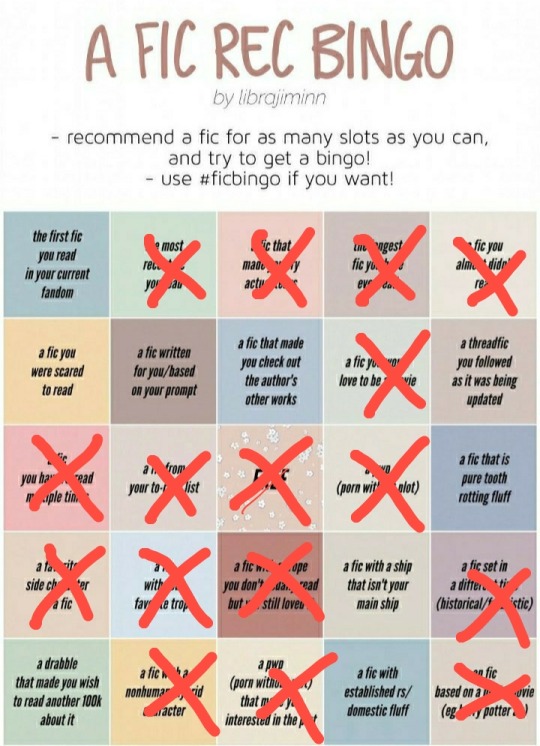
The most recenty read fic: A lot like love and Loey
Ship: Chanbaek
Summary: Where single father Chanyeol has no idea why anyone sane enough would sit outside under the falling snow, but Loey loves Baekhyun, and he thinks that's enough.
Link: https://archiveofourown.org/works/16791604
A fic that made me cry: 10080
Ship: Chanbaek
Summary: Chanyeol wanted a divorce. Baekhyun asked for a week.
Link: https://exobubz.livejournal.com/929.html
The longest fic: Acquired taste
Ship: Chanbaek
Summary: Baekhyun believed it was Henri Matisse who said that "creativity takes courage." Thomas Merton stated that "art enables us to find ourselves and lose ourselves at the same time." As a young painter still in learning, Baekhyun's only profound and memorable quote so far is "Fuck you, Park Chanyeol, for using every opportunity you get to ruin my fucking life."
Link: https://archiveofourown.org/works/22915615/chapters/59247361#workskin
A fic I almost didn’t read: Where dreams come true (ongoing)
Ships: Seonghwa/Hongjoong - San/Wooyoung - Yunho/Mingi - Yeosang/Jongho
Summary: Working at Disney World seems magical on the surface. Working there with people like this is not something any of them had in mind. In other words, the Happiest Place on Earth isn’t what they expected.
Link: https://archiveofourown.org/works/25530529/chapters/61944745
A fic that made me check out the author’s other works: My heart is glowing fluroscent (I want you to possess it)
Ship: Woosan
Summary: Jung Wooyoung has considered himself fairly lucky, having an easy life and just going with the flow. So when he reluctantly agrees to a Master/Pet partnership with Brat Tamer Choi San to help his best friend pay off a debt, he begins to wonder if that luck has run out.Yet, despite all his preconceived notions, Wooyoung soon learns which of the two is truly in control. And as time passes he finds himself not only enjoying the role he plays, but also the man who set out to tame him.
Link: https://archiveofourown.org/works/26742952/chapters/66452752#workskin
A fic I’d like to be a movie: licenced to survive & on melochony hill
Licenced to survive:
Ship: Woosan
Summary: “I’m San,” San says, voice dropping in a force of habit, something that has latched onto him from years of living the same humdrum life and his lifelong acquaintance with introducing himself to people who truly didn't give a fuck about him or anything he did, introductions serving merely as a necessary evil.The stranger looks at him for a brief moment before he tilts the disinfectant bottle into the ball of cotton, soaking it as he leans forward and presses it against San’s stitches. San grabs his wrist.“I’m gonna need a name before you treat me, pretty boy,” San says, making sure that it doesn’t come off sounding like a request.The stranger raises his head to meet his eyes, something like sadness pooling in his eyes, smudged black and purple distracting San for the umpteenth time this evening and whispers softly, “Wooyoung.”It’s a pretty name for a pretty face, but San is presented with an even prettier smile, shy and curling at the edges of his mouth, lilac field for his hair and cherry blossom cheeks, as he repeats it under his breathe
Or, San is working in the task force as a mercenary for an intergalactic law enforcement authority, and Wooyoung's the anomaly he doesn't see coming.
Link: https://archiveofourown.org/works/23825965/chapters/57250096
For “on melocholy hill” see A favorite side character
A fic I have re-read: A prize to be claimed
Ship: Chanbaek
Summary: Baekhyun didn’t think much of it when Chanyeol, his childhood nemesis, won a tournament held by their pack. That is, until said nemesis demanded him as a prize.
Link: https://archiveofourown.org/works/17394146/chapters/44797411#workskin
A fic from my to read list: Kissed by fire
Ship: Chanbaek
Summary: It is with the introduction of a mischievous, red-haired wildling that Chanyeol’s loyalty to the Night’s Watch really starts to crumble.
Link: https://archiveofourown.org/works/10884300/chapters/24186225
A pwp: you make my heart (go!)
Ship: Lumark
Summary: There's a lot you can find out during never have I ever, and for Mark that includes finding out your best friend is a virgin in every sense of the word. So, what else was he supposed to do other than help Yukhei find out just how good his body can feel? But, what happens when feelings are thrown into the mix?
Link: https://archiveofourown.org/works/16305581?view_adult=true
A favorite side character: Heechul and Junmyeon in “On melancholy hill”
Ship: Chanbaek
Summary: Something strange is happening in town and it's up to Baekhyun to find out what it is. It's easier said than done — especially with the new necromancer threatening to take over his job.
Link: https://archiveofourown.org/works/15053624/chapters/34898414#workskin
A fic with my favorite trope: My constellation is a fragment of the sun (ongoing)
Ship: Woosan
Summary: All Jung Wooyoung wanted to do was spend his Christmas drinking hot chocolate and drawing by the fire. That all changes after the Jung family is invited to the castle for Ardendall’s Royal Christmas Ball. Being sent out as representation for the Jung pack, Wooyoung is stuck in the Palace for a month. But Wooyoung knows that the Ball is just an excuse for the Crown Prince to choose his mate. And he has no desire in becoming that person.
Link: https://archiveofourown.org/works/28147851/chapters/68968428
A fic with a trope that I don’t usually read: In the eyes of the beholder
Ship: Chanbaek
Summary: Chanyeol’s hiding a secret that Baekhyun already knows. He can be rather stubborn about it, but watching your husband struggle with a condition like this on his own has never been easy either.
Link: https://yeolliepopday.livejournal.com/39203.html
A fic set in a different time: bluebirds in the moonlight
Ship: Chanbaek
Summary: Chanyeol stood at the front for three years. Morocco, Italy, Normandy, Germany and that folded paper was still there, inside his pocket. The photo that, even if crumpled and deprived of any color, showed a smile more dazzling than any rainbow. The smile of his first love, the beautiful florist that gave Chanyeol a reason to keep on fighting for his life. “Come back to me, Chanyeol” And he did, because he hadn't confessed his love yet.
Link: https://archiveofourown.org/works/18936796/chapters/44958520
A fic with a nonhuman character: It’s you
Ship: Chanbaek
Summary: In which Chanyeol is a beta in love with an omega way out of his league.
Link: https://archiveofourown.org/works/24513703?view_adult=true
A pwp that made me infested in the plot: late flights & city lights
Ship: Lumark
Summary: Mark doesn’t splutter, doesn’t choke- fights against the urge to tug Yukhei down by the collar of his shirt and wipe that irritatingly attractive smirk off of his face. He holds fast against the scarlet blush tinting his cheeks and ears, ignores the heat sweeping across his neck and collarbones. Stubborn and unyielding, Mark doesn’t want to give Yukhei the satisfaction of seeing his effect.Yeah, that lasts about 0.2 seconds, because Mark is so focused on not reacting that he doesn’t realize he’s not breathing.
Link: https://archiveofourown.org/works/17791538
A fic based on a book/movie: and miles to go before I sleep (ongoing)
Ship: Lumark
Summary: Mark Lee is, in theory, the perfect candidate to pilot a Jaeger. He's at the top of his class, his drop scores are second to none, and he can recite fifty ways to take down a kaiju with his eyes closed. There's only one problem: he can't Drift with anyone. All of that changes when a washed-up pilot from Hong Kong knocks on the doors of the Jeju Shatterdome.
Link: https://archiveofourown.org/works/20955737/chapters/49824203
#fanfics#fanfic#kpop#lumark#woosan#chanbaek#baekhyun#chanyeol#wooyoung#mark lee#nct lucas#san#exo#ateez#nct#wayv#SUPERM#seonghwa#hongjoong#yeosang#jongho#yunho#mingi
40 notes
·
View notes
Text
Flowers have been used in visual art for centuries to convey a multitude of meaning to audiences. While working through my most recent Week by Week Challenge topic, I began to explore famous artists and what flowers meant to them, through the likes of Frida Kahlo, Pablo Picasso, Henry Matisse, and Vincent Van Gogh.
Symbolically, flowers have been used through art for aesthetic purposes to provide colour and reoccurring patterns. ‘Sunflowers’ (1888, Van Gogh), and ‘Vase with two handles’ (1907, Matisse) are two great examples of this. Sunflowers uses a more monochromatic pallet with warm yellow tones, whereas Vase with two handles uses vivid colours painted in a Fauvism style.
On the other hand, we have artists like Frida Kahlo, who used flowers to represent heritage and personal stories. She would use marigolds in her work, which were native to her country and typically found growing around her childhood home. She would also paint flowers in honour of fertility, and the fact she was unable to conceive due to a bus accident in her youth.
Personally, I think flowers are a symbol of either fleeting time or beauty. Other than times I’ve used them for aesthetic purposes, I think flowers speak a lot on how quickly time passes in this world, and that we should make the most of it. I also think it speaks on shallow mindsets and ideologies, commenting on people who place looks or money over relationships and self-fulfilment.



4 notes
·
View notes
Photo
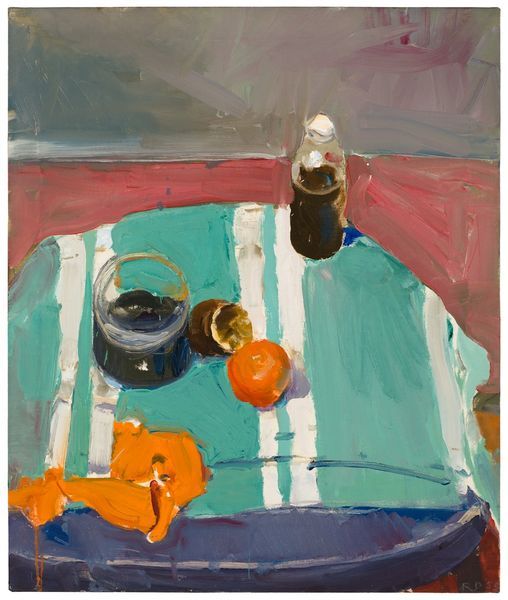
Richard Diebenkorn, Still Life with Orange Peel, 1955;
San Francisco Museum of Modern Art, bequest of Barbara E. Foster; © The Richard Diebenkorn Foundation
"In developing the checklist for the Matisse/Diebenkorn exhibition, my co-curator Katy Rothkopf of The Baltimore Museum of Art and I were eager to include Richard Diebenkorn’s Still Life with Orange Peel (1955). It is one of the first paintings Diebenkorn made when, taking cues from his close friends and fellow artists David Park and Elmer Bischoff, he turned his attention from the Abstract Expressionism of his Berkeley series to subject matter from the world around him. To our minds, it perfectly captured how attuned Diebenkorn was to art history as he forged his own distinctive vocabulary as a painter.
The vibrant picture features objects from the artist’s studio as well as fruit, which Henri Matisse (and Paul Cézanne before him) loved to paint. But in keeping with the American artist’s un-fussy sensibility, Diebenkorn’s loosely painted arrangement is much less composed, almost haphazard. And Diebenkorn almost comically includes not just an orange, but an orange peel, as well as a brown, rotten lemon (both elements he liked so much that he would paint them again). We also loved the quirky view from above and the way that the gorgeous aqua-green and white of the striped fabric—a portion of one of Diebenkorn’s childhood bedspreads���enlivens the painting as textiles do in so many of Matisse’s canvases." continue reading - by Janet Bishop
https://www.sfmoma.org/.../still-life-orange-peel-one.../
10 notes
·
View notes
Photo

Sam is no longer a baby—- (14teen now!) nevertheless he will always be my baby boy! Sam~ 2012 is a Portrait of my youngest son rendered in an post-impressionistic and fauvist manner. I played with pattern and color to evoke the feeling of joyful mischievousness and whimsy. Inspired my Henri Matisse and Paul Gauguin work and #belindacolozzi #art #arte #artist #saatchiartist #expressionism #fineart #portrait #matisse #childhood #mother #life #love #son #art #artlovers #acrylicpainting #portrait #motherhood #unconditionallove #family #artistoninstagram #artoninstagram (at Oro Valley, Arizona) https://www.instagram.com/p/COqsWRHnXgD/?igshid=misaptyyz81o
#belindacolozzi#art#arte#artist#saatchiartist#expressionism#fineart#portrait#matisse#childhood#mother#life#love#son#artlovers#acrylicpainting#motherhood#unconditionallove#family#artistoninstagram#artoninstagram
1 note
·
View note
Photo










Ascher: The Mad Silkman
Zika & Lida Ascher: Textiles and Fashion
Konstantina Hlavácková
Slovart Publishing, Prague 2019, 404 pages + 20 pages attachment , ISBN 978-8075297488
euro 77,00
email if you want to buy [email protected]
Exhibition at the Museum of Decorative Arts in Prague, 15.2.-15.9.2019
Although the name and the brand are entirely unknown in the Czech Republic, Ascher has been synonymous with fine textile design for more than seventy years in western Europe. This book traces the story of Zika Ascher and his wife Lida, whose personal and professional lives played out against the dramatic history of the twentieth century. After leaving Czechoslovakia in 1939, they built a highly successful enterprise in London that specialized in fashion fabrics. French, Italian, and British designers and fashion houses chose Ascher textiles for their collections, including #Dior, #Balenciaga, #Lanvin, Pierre #Cardin, Yves #SaintLaurent, Ronald Paterson, David Sassoon, and Alberto Fabiani. Lida and Zika were especially celebrated for their Squares, a collection of luxurious printed scarves designed by famous artists such as Henry #Moore, Henri #Matisse, and André #Derain. The book weaves together all the different strands of their eventful lives to produce a comprehensive account that goes beyond the individual artistic, technical, and business aspects. It devotes considerable attention to the years before Zika and Lida left Czechoslovakia in 1939 to go into exile in the United Kingdom, and it subsequently continues to map developments in their former homeland, which they never renounced. Lida and Zika's son Peter Ascher has also contributed to the book with some of his childhood memories.
15/01/20
orders to: [email protected]
ordini a: [email protected]
twitter:@fashionbooksmi
instagram: fashionbooksmilano, designbooksmilano tumblr: fashionbooksmilano, designbooksmilano
#Ascher#Zika & Lida Ascher#fashion exhibition catalogue#textile design#Norman Hartnell#Ben Nicholson#Christian Bérard#Molyneux#fashion history#fashion inspirations#fashion books#fashionbooksmilano#silkman
23 notes
·
View notes
Text
Pablo Ruiz Picasso Spanish Painter, Sculptor via /#bestofcanvas
Pablo Ruiz Picasso Spanish Painter, Sculptor
Pablo Ruiz Picasso 25 October 1881 – 8 April 1973) was a Spanish painter, sculptor, printmaker, ceramicist, stage designer, poet and playwright who spent most of his adult life in France. Regarded as one of the most influential artists of the 20th century, he is known for co-founding the Cubist movement, the invention of constructed sculpture,the co-invention of collage, and for the wide variety of styles that he helped develop and explore. Among his most famous works are the proto-Cubist Les Demoiselles d'Avignon (1907), and Guernica(1937), a dramatic portrayal of the bombing of Guernica by the German and Italian airforces during the Spanish Civil War.
Picasso demonstrated extraordinary artistic talent in his early years, painting in a naturalistic manner through his childhood and adolescence. During the first decade of the 20th century, his style changed as he experimented with different theories, techniques, and ideas. After 1906, the Fauvist work of the slightly older artist Henri Matisse motivated Picasso to explore more radical styles, beginning a fruitful rivalry between the two artists, who subsequently were often paired by critics as the leaders of modern art.
Picasso's work is often categorized into periods. While the names of many of his later periods are debated, the most commonly accepted periods in his work are the Blue Period (1901–1904), the Rose Period (1904–1906), the African-influenced Period (1907–1909), Analytic Cubism (1909–1912), and Synthetic Cubism (1912–1919), also referred to as the Crystal period. Much of Picasso's work of the late 1910s and early 1920s is in a neoclassical style, and his work in the mid-1920s often has characteristics of Surrealism. His later work often combines elements of his earlier styles.
Exceptionally prolific throughout the course of his long life, Picasso achieved universal renown and immense fortune for his revolutionary artistic accomplishments and became one of the best-known figures in 20th-century art.
Source
Submitted August 14, 2019 at 04:23PM via #bestofcanvas https://www.reddit.com/r/u_HoustonCanvas/comments/cqg5ch/pablo_ruiz_picasso_spanish_painter_sculptor/?utm_source=ifttt
2 notes
·
View notes
Photo










Arrivals & Departures 03 February 1874 – 27 July 1946 Gertrude Stein
Gertrude Stein was an American novelist, poet, playwright, and art collector. Born in Pittsburgh, Pennsylvania in the Allegheny West neighborhood and raised in Oakland, California, Stein moved to Paris in 1903, and made France her home for the remainder of her life. She hosted a Paris salon, where the leading figures of modernism in literature and art, such as Pablo Picasso, Ernest Hemingway, F. Scott Fitzgerald, Sinclair Lewis, Ezra Pound, Sherwood Anderson and Henri Matisse, would meet.
In 1933, Stein published a quasi-memoir of her Paris years, The Autobiography of Alice B. Toklas, written in the voice of Alice B. Toklas, her life partner. The book became a literary bestseller and vaulted Stein from the relative obscurity of the cult-literature scene into the limelight of mainstream attention. Two quotes from her works have become widely known: "Rose is a rose is a rose is a rose," and "there is no there there", with the latter often taken to be a reference to her childhood home of Oakland.
Her books include Q.E.D. (1903), about a lesbian romantic affair involving several of Stein's friends; Fernhurst, a fictional story about a love triangle; Three Lives (1905–06); and The Making of Americans (1902–1911). In Tender Buttons (1914), Stein commented on lesbian sexuality.
Her activities during World War II have been the subject of analysis and commentary. As a Jew living in Nazi-occupied France, Stein may have only been able to sustain her lifestyle as an art collector, and indeed to ensure her physical safety, through the protection of the powerful Vichy government official and Nazi collaborator Bernard Faÿ. After the war ended, Stein expressed admiration for another Nazi collaborator, Vichy leader Marshal Pétain.
3 notes
·
View notes
Text
My Final Major Project
The title of my Final Major Project is Evolution of Art. Inspired by my childhood art work that covers my home and homes of others. I am mainly interested in personal development and the wider matter of the progression in the history of art, I wanted to focus on how people change their style and how this style is established or advanced. While doing research on this I noticed how the art of children could be linked to the work of professional/famous artists. Making me think do children copy and learn this or is it something that they are born with. This led me to questions like ‘Are people born creative?’, ‘Are some people more naturally artistic?’ and ‘Can artistic talent be learnt?’. This theme also links well with the overriding theme of cycles I have used in other projects. A person’s life, the passing of genes / evolution and the never ending expansion of art history can all be seen as cycles.
Influences, Research, Sources and Ideas
Thinking about other work I have done that could link to this, in A-Level Psychology one of our topics was on the debate of nature and nurture. This concept puts forward the idea that all human behaviour is controlled by either biology (genes, hormones etc.) or environment (parental, childhood, etc.). I will also consider how art has changed through history, like different art movements and their techniques. I would also like to acknowledge artists who have drastically changed their style in adulthood, for example Pablo Picasso, Frida Kahlo, Henri Matisse, Jackson Pollock and Andy Warhol. Some of whose work I have seen in places like the Tate London, Musée National Picasso and Musée d’Orsay. However, for a starting point I would like to use my own childhood art works and redevelop them to show personal growth and how my existing understanding of the formal elements would influence my development of these pieces. I may additionally like to collect other student’s childhood art. As a child, work is instinctive. Composition, shape and line would not have been considered. Have we improved or just become controlled?
Techniques, Processes and Timescale
I am often inspired by techniques and artists from a range of backgrounds such as Fine Art painters and Graphic Designers. I think it is important for my work to be stimulated by this as a feel people working in textiles are often seen as being cut off from things like Art History. During my project I will use lots of different techniques and media from a range of specialisms not just textiles. Combining textiles methods like screen printing and stitch to things like drawing, painting and photography. I would also like to develop techniques that I had used in the previous projects, like dark room photography, paper cutting and projection. However, I would like to stay as open as possible to new techniques that I may discover.
Method of Evaluation
I will continually evaluate and record all changes and developments in a journal, and take part in both group and peer critiques. Where other students can evaluate my progression and I can evaluate theirs. I will record the success of my project from the overall success of the exhibition. An evaluation will also be completed mid-way through the project and at the completion so I can clearly see the direction my work is taking. I think that evaluation is particularly important in my project as the theme is based on progression, growth and improvement in art.
1 note
·
View note